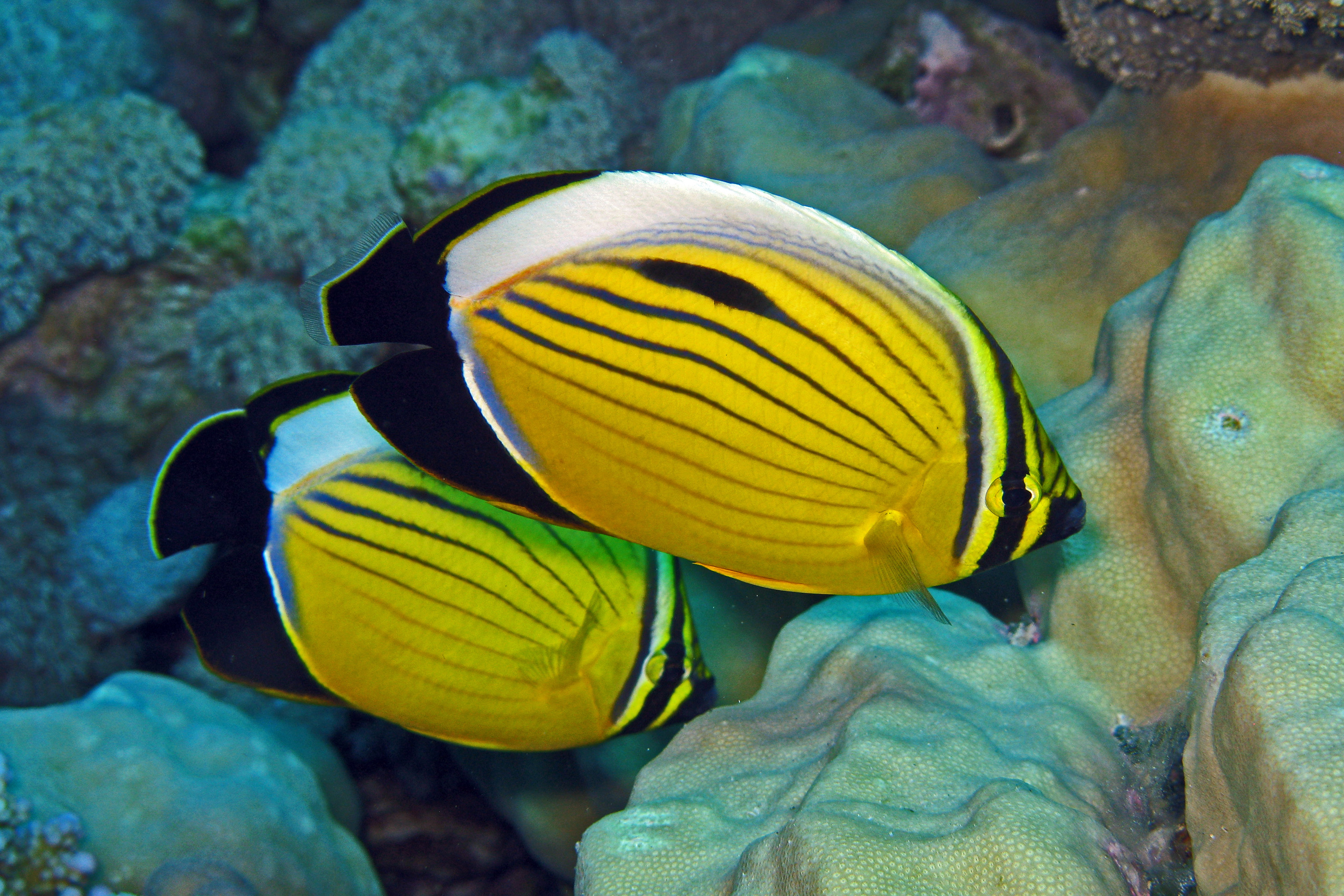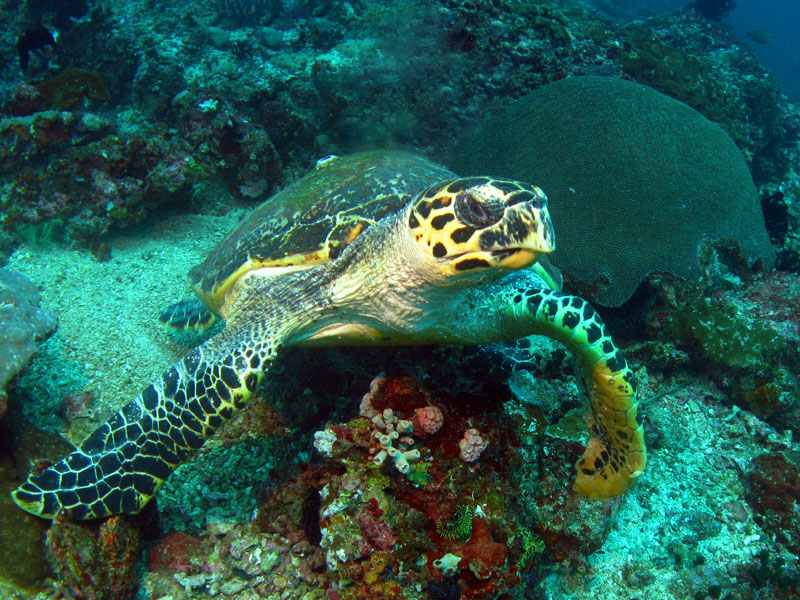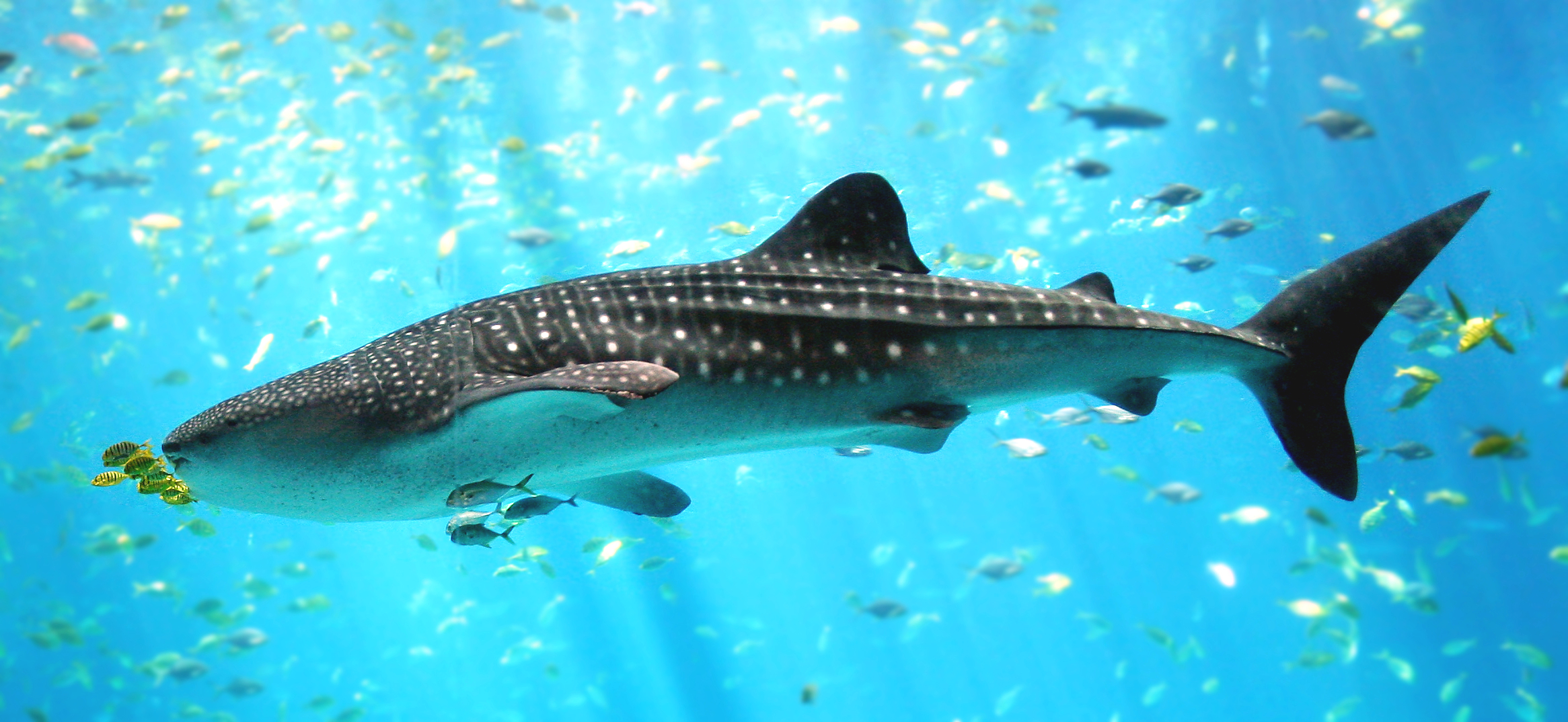27
“Eco Cafe” by Phuket [CC by 2.0]
Coral bleaching is a phenomenon that occurs when coral turns white due to environmental stress. It is a reoccurring event that frightens marine biologists and raises a lot of concern for marine ecosystems all over the world. When the water is too warm, corals will expel the algae (zooxanthellae) living in their tissues. As a result, the coral loses its vibrant color and becomes more prone to developing disease. Corals have a mutualistic relationship with these algae. This means that the organisms depend on each other for survival. From their photosynthetic products, zooxanthellae give the coral the nutrients they need to survive while the coral in exchange give the zooxanthellae carbon dioxide and safe harbor. When they are lost, it is a huge loss for the coral because these symbiotic algae provide the coral with 90% of its energy through the process of photosynthesis. Without the zooxanthellae, the coral begins to lose its color and eventually has a bright white appearance, hence the term coral bleaching. In essence, the coral will starve and die without the needed nutrients from the zooxanthellae. Global warming is a big cause of coral bleaching but other environmental factors also play major roles.
The video below explains more about what coral bleaching is, what causes it and the effects that it is having!
The corals may be able to survive for a short period of time without the zooxanthellae, but since the algae provides its primary food source it cannot survive for long. Once the coral has died, its begins to degrade. Another cause of coral bleaching is oxygen starvation. This is caused by an increase in the zooplankton population in a given area, most likely due to over-fishing. Another trigger that is less common but still notable is sedimentation. This occurs from silt runoff from land into the ocean via rain and other bodies of water leading into the ocean. Also, La Nina or EL Nino can also play a role by not only changing the temperature of the water but also by bringing some silt/sand along with nutrients up from the bottom of the ocean. The biggest cause of coral bleaching is from the stress created from warmer water temperatures due to global climate change.

Corals provide shelter for a number of marine organisms and they also protect shorelines. Without coral reefs, marine life would most likely leave the area which in turn, could cause harm to marine ecosystems. Coral reefs help to support approximately 25% of marine species. They are also a huge benefit to the fishing industry since they attract so much marine life.

There have been three major coral bleaching events recorded in history, the first occurred in 1998, an underwater heatwave spread, killing 16% of corals around the world. The second major coral bleaching event occurred in 2010, caused by an El Niño. The most recent coral bleaching event occurred in 2015, which was caused by ocean warming.
The warming of the ocean is a huge threat to coral reefs. As stated previously, ocean warming is the number one cause of coral bleaching. A shocking 93% of climate change heat is absorbed by the ocean.
But what is the underlying cause of all of this?
Global climate change is caused by increased greenhouse gases, primarily carbon dioxide, that are released into Earth’s atmosphere. The carbon dioxide and other gases trap heat in the atmosphere, causing the Earth to heat up. When the Earth heats up, water temperatures increase and result in coral bleaching.
Humans are the main source of greenhouse gases that are produced and released into the atmosphere due to the burning of fossil fuels. Vehicles are one of the many producers of Carbon Dioxide. Burning one gallon of gas produces approximately 24 pounds of Carbon Dioxide. Another way in which humans produce these gases is by burning coal for electricity. Burning wood to produce fire for cooking is also another every day activity that contributes to the emission of these gases. The other major factor that contributes to increase in greenhouse gases in Earth’s atmosphere is deforestation. For years, humans have been cutting down trees in large numbers to make room for the construction of buildings and also to use the wood as fuel. Trees are very important to our ecosystems because they absorb a lot of the carbon dioxide that is in the Earth’s atmosphere. By absorbing carbon dioxide, they are able to perform photosynthesis and release Oxygen as a byproduct. As trees are removed in large numbers, this sink for carbon dioxide is greatly reduced and the amount of carbon dioxide in the atmosphere continues to increase.

Most people don’t realize how important coral really is to not only marine life, but also to human life. For fish communities and other reef dwelling creatures, the coral is everything to them and they all rely on the coral structure in some way. The reefs provide shelter for smaller fish and can be a food source for others. Coral reefs are essential for life for a countless number of organisms and without the coral, a good number of these organisms will perish, leading to a much bigger problem. If the smaller fish can no longer survive without the coral reef, then that will lead to less food for the larger fish that feed on them.
Around 100 million people around the globe rely on coral reefs for survival. With a decrease in healthy coral ecosystems, there will be less fish which are an important food source for many humans. People also rely on coral reefs for other economic purposes such as tourism. The impact of coral reef loss on the tourism industry is estimated at around 10 to 40 billion dollars, followed by fisheries losing 7 to 23 billion dollars and biodiversity impacts resulting in losses of 6 to 22 billion dollars.
Marine Species Impacts:

Butterfly fish are fish that feed exclusively on coral polyps. With their food source disappearing. their chance of survival is small. Butterfly fish also keep algae from smothering corals and if this population decreases, the corals that are still living could end up dying because of too much algae.
.jpg/1280px-Spiny_Lobster_Approaching_(17569640755).jpg)
Spiny lobsters need coral reefs for protection, especially when they are molting because that is when they are most vulnerable. These lobsters play a significant role in maintaining a balanced ecosystem. Spiny lobsters are predators of sea urchins, which feed on kelp forests and can destroy them if populations are not predator-controlled.

Dolphins and most whales are predatory animals and they are all carnivorous. They survive by eating fish that rely on coral reef habitats. Each species that is lost from coral bleaching has the potential to affect the rest of the ecosystem.

Hawksbill Sea turtles have become a critically endangered species and are very dependent on coral reefs for their food sources. Their diet mostly consists of sponges. Sea turtles play a very important role in their ecosystems by helping with nutrient cycling from ocean to land, maintaining healthy sea grass beds, and balancing food webs.

Studies have shown that whale shark populations have decreased in the 1980s and 1990s and this may be due to the destruction of corals. Many corals were destroyed in this time period from people and coral bleaching. Although it is not certain that these two are related to each other, the times frames suggest that they are.

Solutions:
There are many ways that people can help reduce the amount of coral bleaching that is occurring. One way that we can do it is by reducing fuel pollution by using alternative transportation methods such as running or biking instead of driving a motor vehicle, or kayaking and canoeing instead of using your boat. Not touching and breaking corals when diving or snorkeling can be a huge help since just touching a coral with your bare hand can have negative effects on it. Not using harmful fertilizers and pesticides in your yard and garden can also help a lot because they will eventually find their way to the ocean. Volunteering for a community reef and beach cleanup can also help keep trash out of the ocean which will keep it from getting into the reefs.
The information in this chapter is thanks to content contributed by Alana Olendorf, Simone McEwan, Haley Fantasia and Devon Audibert

